Examples Of Adaptive Behavior
Examples of adaptive behavior. Since adaptive behaviors are for the most part developmental it is possible to describe a persons adaptive behavior as an age-equivalent score. Adaptive behavior refers to the skills that people need to function independently at home at school and in the communityDoes the disability affect the students ability to acquire or demonstrate adaptive behavior skills. Mark Dombeck PhD.
A lack of adaptive skills could be seen in my children. Adaptive behaviors include real-life skills such as grooming getting dressed avoiding danger safe food handling following school rules managing money cleaning and making friends. Adaptive Behavior Life Skills Tammy Reynolds BA CE.
These skills are collectively. Adaptive behavior also includes the ability to work practice social skills and take personal responsibility. Adaptive behavior also includes the ability to work practice social skills and take personal responsibility.
Adaptive behaviors include real-life skills such as grooming getting dressed avoiding danger safe food handling following school rules managing money cleaning and making friends. The standard of day-after-day functioning in jobs that is needed for someone to satisfy very common positions in their community such as keeping up independence and fulfilling social desires about individual and cultural duty. For example adaptive behavior is defined in terms of effectively coping with common life demands and the ability to meet the standards of personal independence for a particular age group with a specific sociocultural background.
The second defining feature of intellectual disabilities ID formerly mental retardation is the limited development of life skills. And provide an insight into the importance of teaching adaptive behavior. One of the key themes throughout the DSM-IV definition is the cultural aspect of adaptive behavior.
Certain classes that are typically evaluated consist of self help movement health and well. Here are some examples of activities early childhood teachers can implement to develop motor skills. Developed the Vineland Social Maturity Scale 1930s.
Adaptive behavior refers to a persons social responsibility and independent performance of daily activities. Adaptive Behavior Life Skills Life Skills.
Adaptive behavior for individuals with intellectual disabilities.
One of the key themes throughout the DSM-IV definition is the cultural aspect of adaptive behavior. These important skills enable us to live in a safe and socially responsible manner. They include activities like walking talking. To improve childrens physical fitness and motor. Adaptive behavior is the ability to adjust to new situations and experiences developing skills for successful living as well as interpersonal interactions. Adaptive behaviors are real life skills that are age appropriate. Adaptive behavior also includes the ability to work practice social skills and take personal responsibility. Adaptive behavior refers to a persons social responsibility and independent performance of daily activities. Here are some examples of activities early childhood teachers can implement to develop motor skills.
Mark Dombeck PhD. These skills are collectively. The second defining feature of intellectual disabilities ID formerly mental retardation is the limited development of life skills. To improve childrens physical fitness and motor. Since adaptive behaviors are for the most part developmental it is possible to describe a persons adaptive behavior as an age-equivalent score. For example adaptive behavior is defined in terms of effectively coping with common life demands and the ability to meet the standards of personal independence for a particular age group with a specific sociocultural background. The American Association on Intellectual and Developmental Disabilities AAIDD defines adaptive behavior as the collection of conceptual social and practical skills.
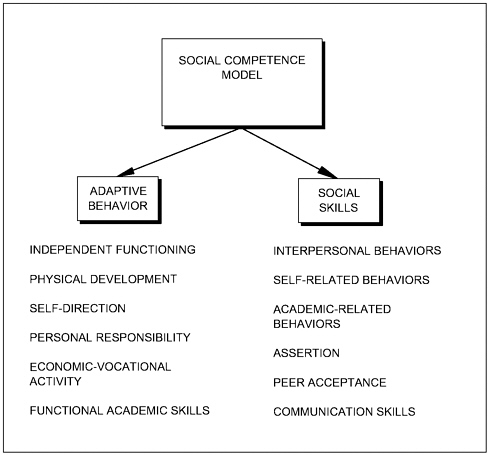

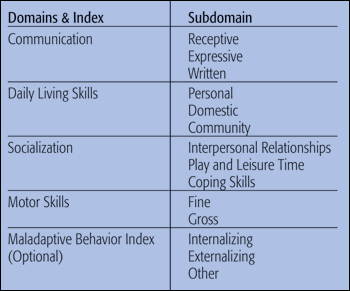




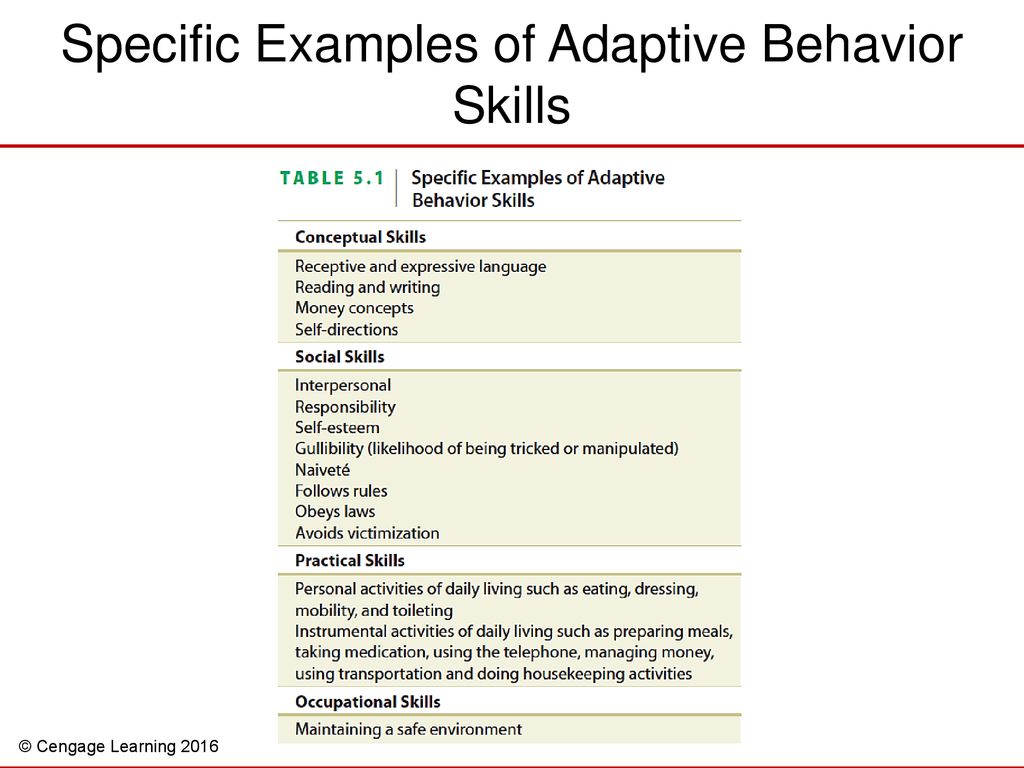

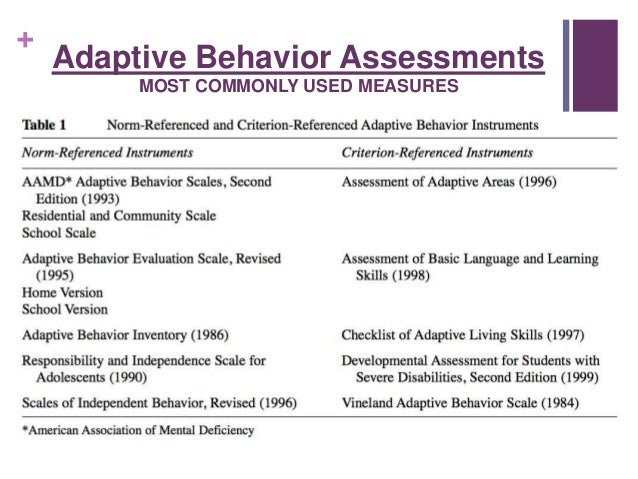


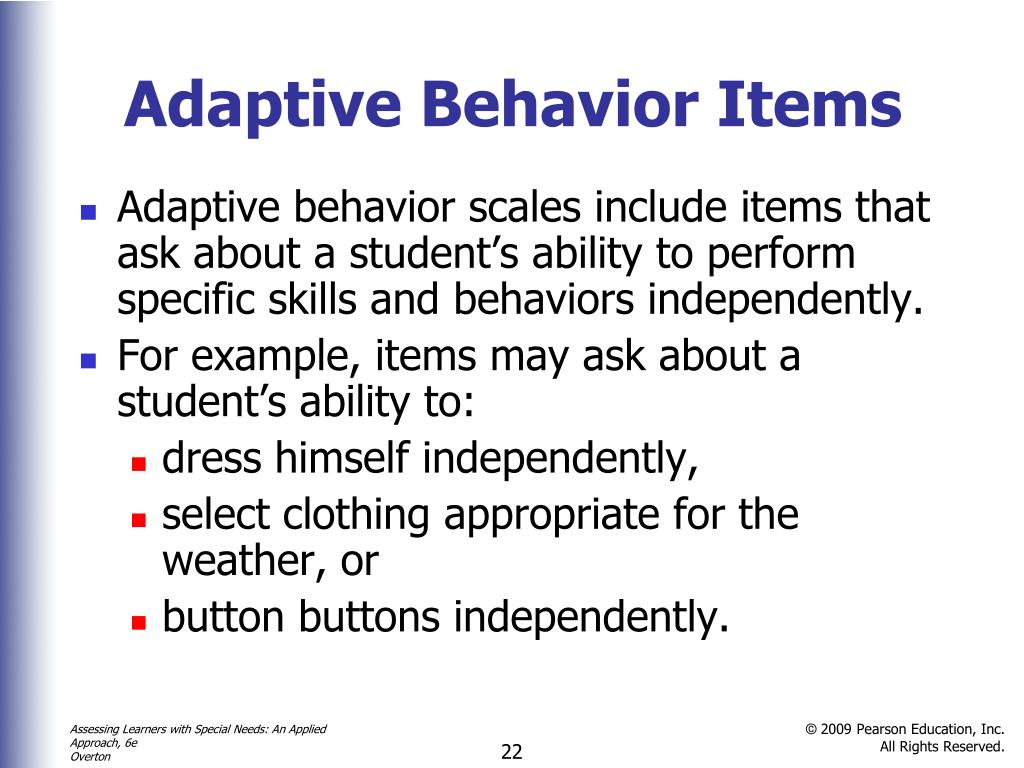
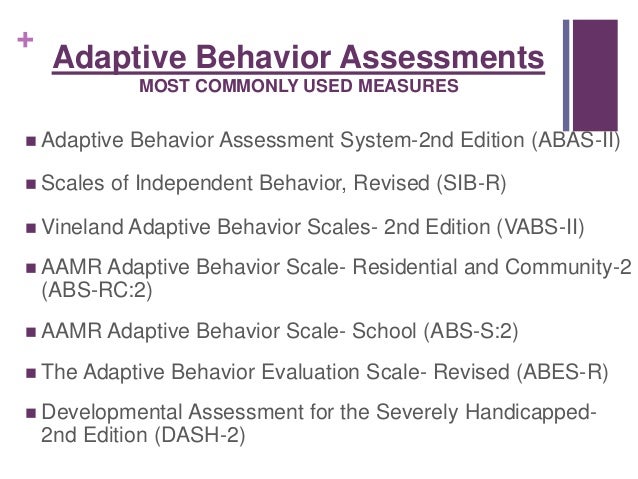

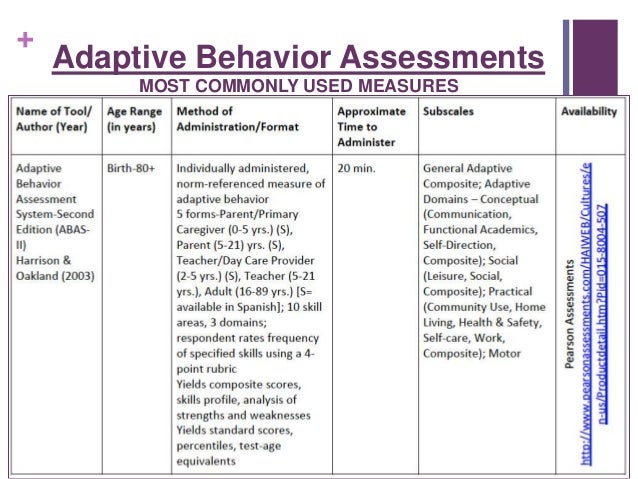
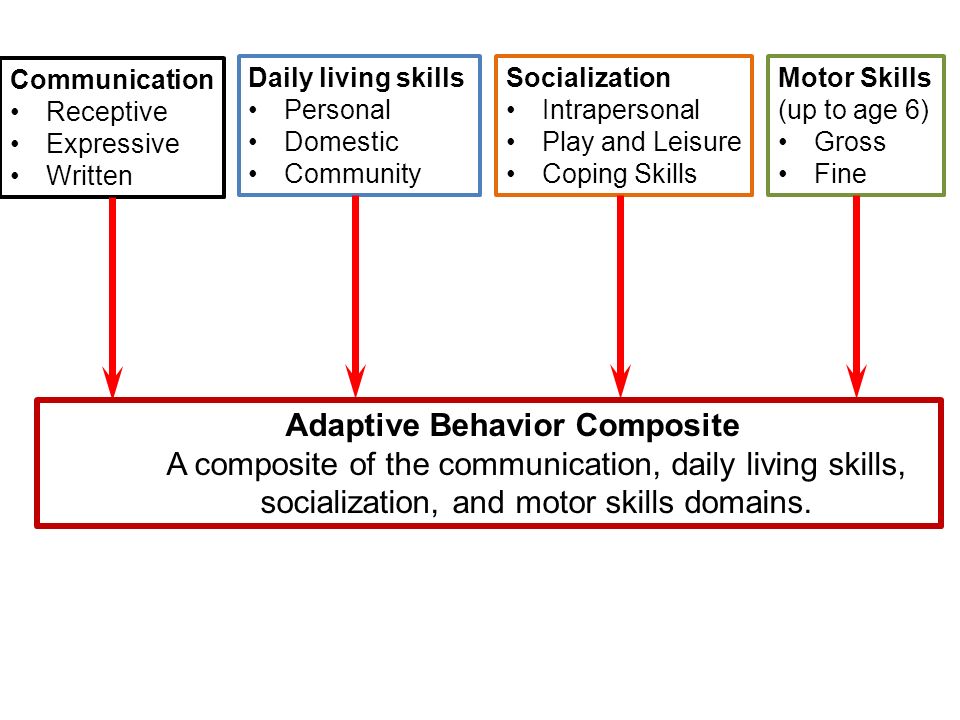
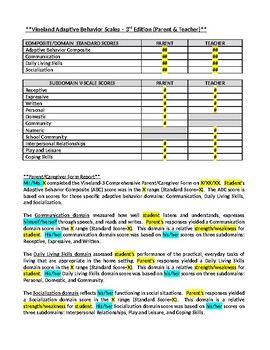


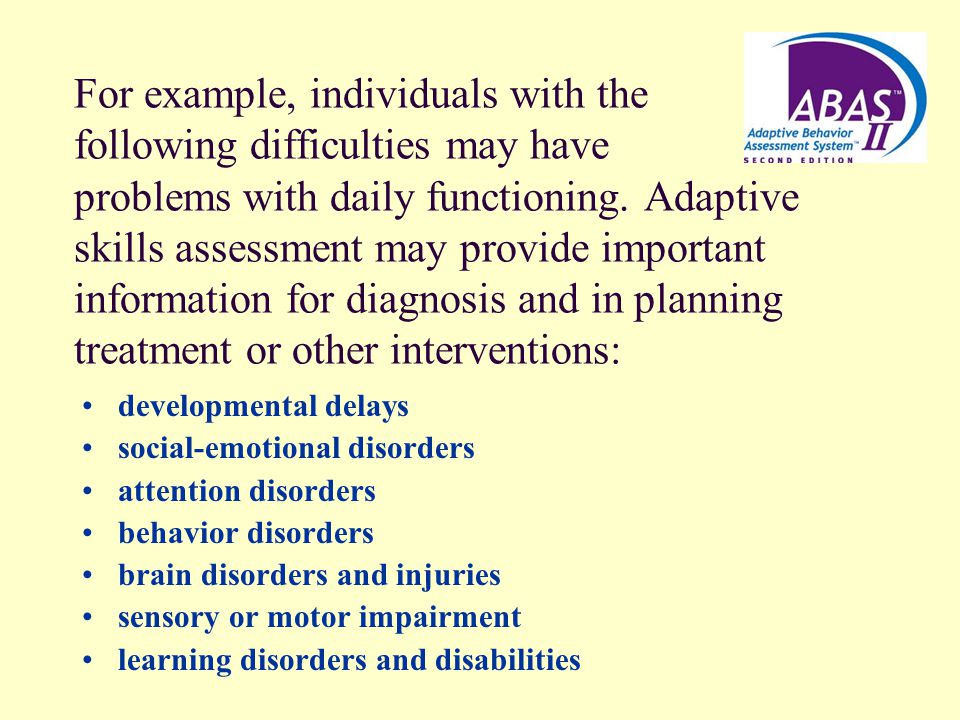



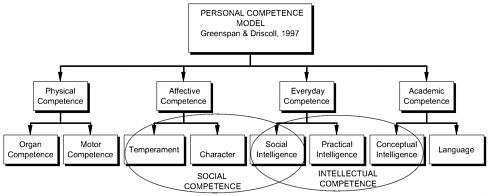
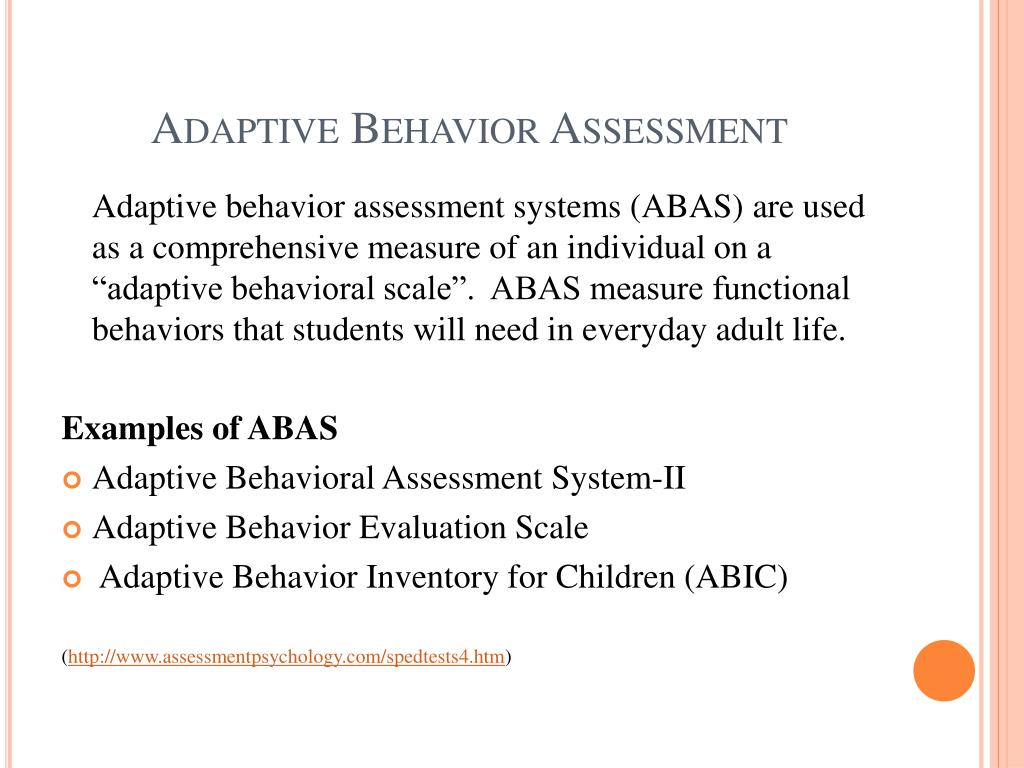

/200461078-001-56a59d285f9b58b7d0dda716.jpg)




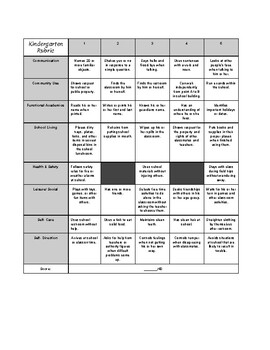
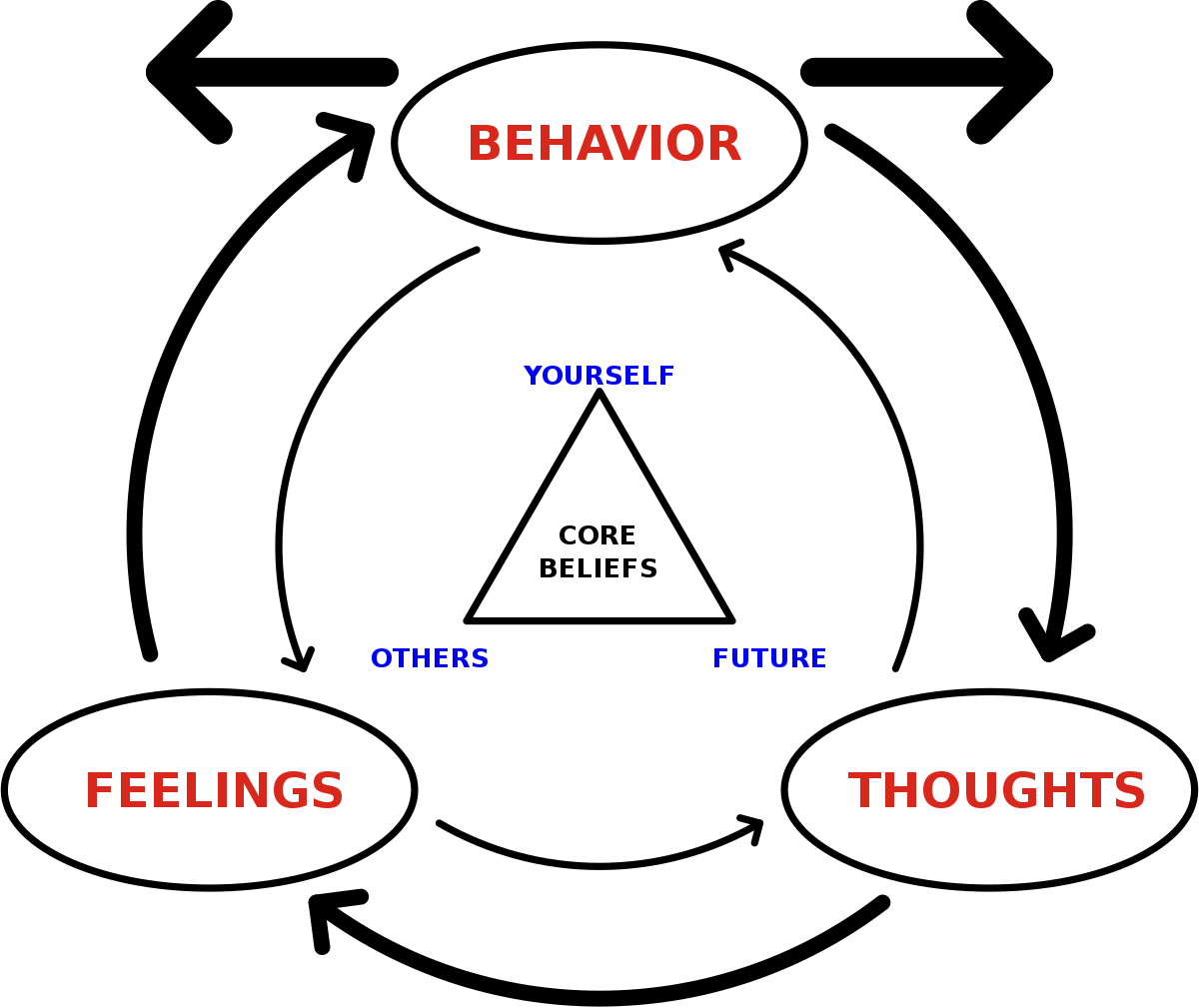



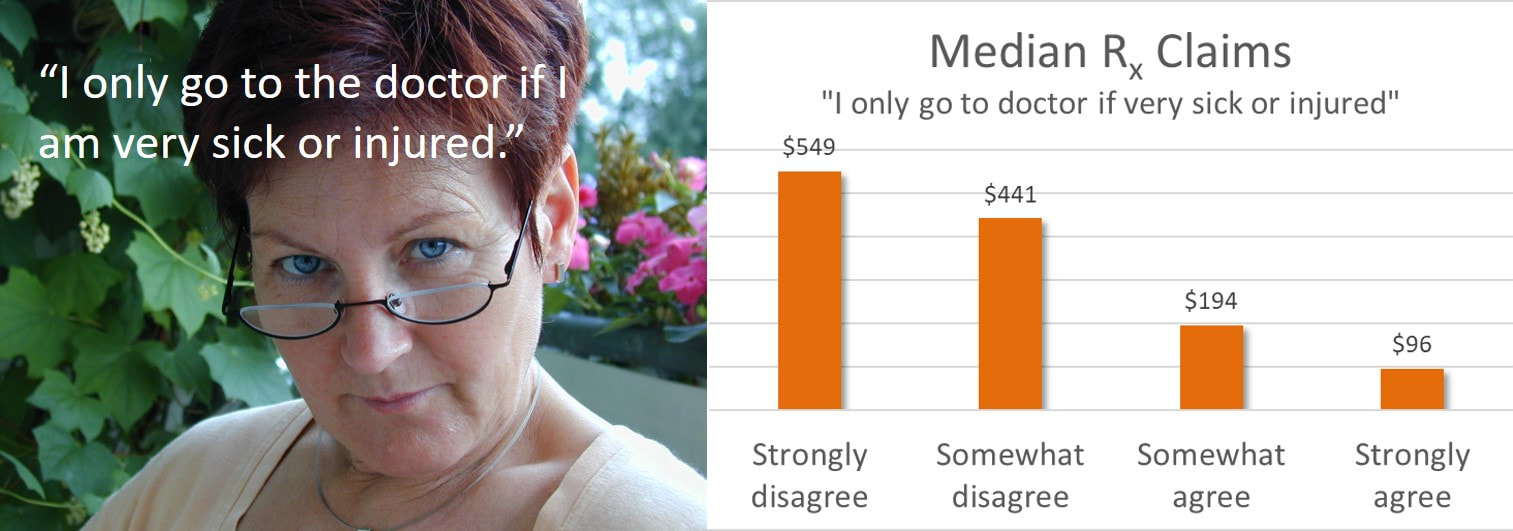


Post a Comment for "Examples Of Adaptive Behavior"